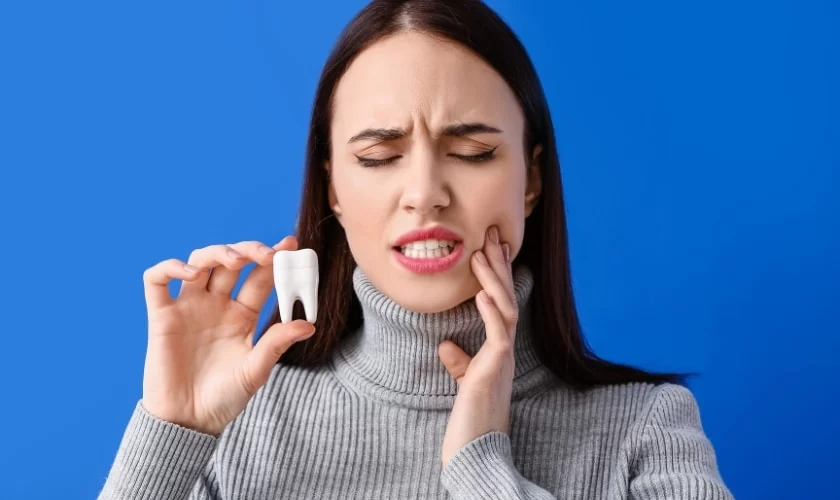
- Common-Causes-Of-Tooth-Pain-After-Eating-Cold-Food
- Tooth-Sensitivity-Explained
- Underlying-Dental-Issues-Leading-To-Cold-Food-Tooth-Pain
- Effective-Ways-To-Manage-Tooth-Pain-Triggered-By-Cold-Food
- Real-Life-Example-Of-Managing-Tooth-Pain
- Finding-Reliable-Dental-Products-And-Services
1. Common Causes of Tooth Pain After Eating Cold Food
Experiencing tooth pain after eating cold food is a common complaint that affects many people. This discomfort can range from mild sensitivity to sharp, intense pain. Understanding the causes of tooth pain after eating cold food is essential to effectively address the issue.
One of the primary reasons is exposure of the tooth’s inner layers due to enamel erosion or gum recession. When the protective enamel thins or the gums pull away, the underlying dentin becomes exposed. This layer contains tiny tubules leading to nerve endings, which react strongly to cold stimuli.
Other causes may include dental decay, cracked or fractured teeth, worn fillings, or inflammation of the dental pulp. Each of these conditions can increase sensitivity and pain when cold foods or drinks come in contact with affected teeth.
2. Tooth Sensitivity Explained: Why Cold Food Triggers Pain
Tooth sensitivity occurs when dentin, the softer layer beneath enamel, becomes exposed. This exposure allows external stimuli like cold, heat, or sweet foods to reach nerve endings inside the tooth, triggering pain signals to the brain.
2.1 Role of Enamel and Gum Health
Enamel acts as a shield protecting the sensitive dentin. Gum tissue also helps cover the tooth roots, which are naturally more sensitive. When enamel is damaged or gums recede, this protection is compromised.
2.2 Nerve Response and Pain Perception
Inside each tooth, microscopic tubules within the dentin lead directly to the nerves. Cold food causes fluid movement in these tubules, irritating the nerves and causing a sharp sensation. This biological reaction explains why even brief exposure to cold can cause immediate pain.
3. Underlying Dental Issues Leading to Cold Food Tooth Pain
While tooth sensitivity is a common cause, several underlying dental problems can contribute to or worsen pain after eating cold food:
3.1 Dental Cavities and Decay
Cavities break down tooth structure, exposing nerves to external stimuli. Cold food can penetrate these areas and cause pain, signaling the need for prompt dental care.
3.2 Cracked or Fractured Teeth
Cracks in teeth create pathways for cold food to reach nerves, often causing sharp, intermittent pain that worsens with cold exposure.
3.3 Gum Disease and Recession
Gum disease leads to inflammation and recession, exposing root surfaces that lack enamel and are highly sensitive to temperature changes.
3.4 Worn Dental Work
Old or damaged fillings and crowns can allow cold food to seep underneath, triggering pain and sensitivity.
4. Effective Ways to Manage Tooth Pain Triggered by Cold Food
Managing tooth pain after eating cold food requires a multifaceted approach combining home care and professional advice.
4.1 Use Desensitizing Toothpaste
Special toothpaste formulated to block tubules can reduce sensitivity over time by creating a protective barrier.
4.2 Maintain Proper Oral Hygiene
Gentle brushing with a soft-bristled toothbrush and flossing help prevent further enamel erosion and gum disease, which contribute to sensitivity.
4.3 Avoid Abrasive Habits
Refrain from aggressive brushing, teeth grinding, and excessive consumption of acidic foods and drinks that wear down enamel.
4.4 Professional Treatments
Dentists can provide fluoride varnishes, dental bonding, or recommend procedures to repair cracks and decay, addressing the root cause of pain.
While home remedies can alleviate symptoms, timely dental evaluation ensures long-term relief and prevention of complications.
5. Real-Life Example of Managing Tooth Pain After Cold Food
Mark, a 28-year-old graphic designer, noticed sharp pain whenever he ate ice cream or drank cold beverages. Initially, he ignored the discomfort, thinking it was temporary. After a few weeks, the pain became more frequent and persistent.
Mark started using a desensitizing toothpaste and adjusted his brushing technique as recommended by online dental resources. Still, the pain lingered, prompting him to visit a dentist. The professional examination revealed early-stage cavities and mild gum recession.
After receiving fluoride treatment and dental fillings, Mark’s sensitivity drastically reduced. This case highlights the importance of combining self-care with professional guidance to manage tooth pain effectively.
6. Finding Reliable Dental Products and Services
For those seeking high-quality products or expert dental care, Dentistry Toothtruth offers a trusted range of solutions. Whether you need specialized toothpaste, oral care tools, or professional services, Dentistry Toothtruth is a valuable resource. Relying on reputable sources helps ensure your dental health is supported by effective and safe products and treatments.







 Angela Manning DDS PC4.0 (66 review)
Angela Manning DDS PC4.0 (66 review) Eastern Dental3.0 (336 review)
Eastern Dental3.0 (336 review) Crimsoncare Family Dental5.0 (248 review)
Crimsoncare Family Dental5.0 (248 review) ABC Dentistry & Orthodontics4.0 (1564 review)
ABC Dentistry & Orthodontics4.0 (1564 review) Loma Linda University Center for Dentistry and Orthodontics4.0 (24 review)
Loma Linda University Center for Dentistry and Orthodontics4.0 (24 review) Mountainside Dental Group - Rancho Santa Margarita4.0 (117 review)
Mountainside Dental Group - Rancho Santa Margarita4.0 (117 review) The Importance of Oral Health Education During Pregnancy for a Healthy Pregnancy
The Importance of Oral Health Education During Pregnancy for a Healthy Pregnancy Best Tips for Brushing Your Teeth Properly for Healthy Gums: Essential Techniques for Oral Health
Best Tips for Brushing Your Teeth Properly for Healthy Gums: Essential Techniques for Oral Health Why Skipping Dental Checkups Can Lead to Bigger Oral Health Problems
Why Skipping Dental Checkups Can Lead to Bigger Oral Health Problems Advantages of Porcelain Dental Restorations
Advantages of Porcelain Dental Restorations How Can Diabetes Cause Tooth and Gum Problems? Preventing and Managing Oral Health Issues
How Can Diabetes Cause Tooth and Gum Problems? Preventing and Managing Oral Health Issues Healthy Habits for Promoting Good Oral Health and Hygiene: Tips for a Healthy Smile
Healthy Habits for Promoting Good Oral Health and Hygiene: Tips for a Healthy Smile